Primary Research
THE PROCESS
The following activities were conduced as a part of Primary research.
Qualitative Influential Attributes (QIAs) Survey
Exploratory Survey
User Study & User Group Formation
User Interview and outcomes
Causal Survey
Methodology
Methodology

Habits

Attitude
Qualitative Influential Attributes (QIAs) Survey
This survey was conducted to validate the behaviours, habits, aptitudes and attitudes of audience identified during secondary research.
STEP
01




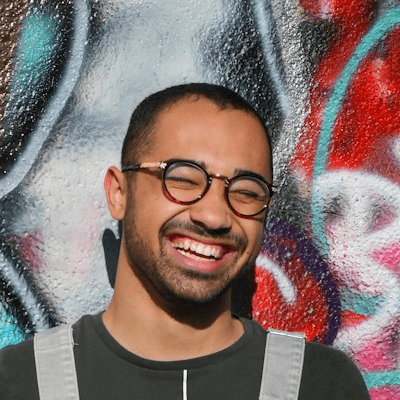
STEP
03
User Study & User group formation
This study was done to collate and evaluate user response data received form surveys to form user groups based on similarities and patterns in user responses.

STEP
05
Causal survey
This survey was conducted to validate the user problems derived from the user interviews. Insights from the survey responses were further studied and Interpretations were made.
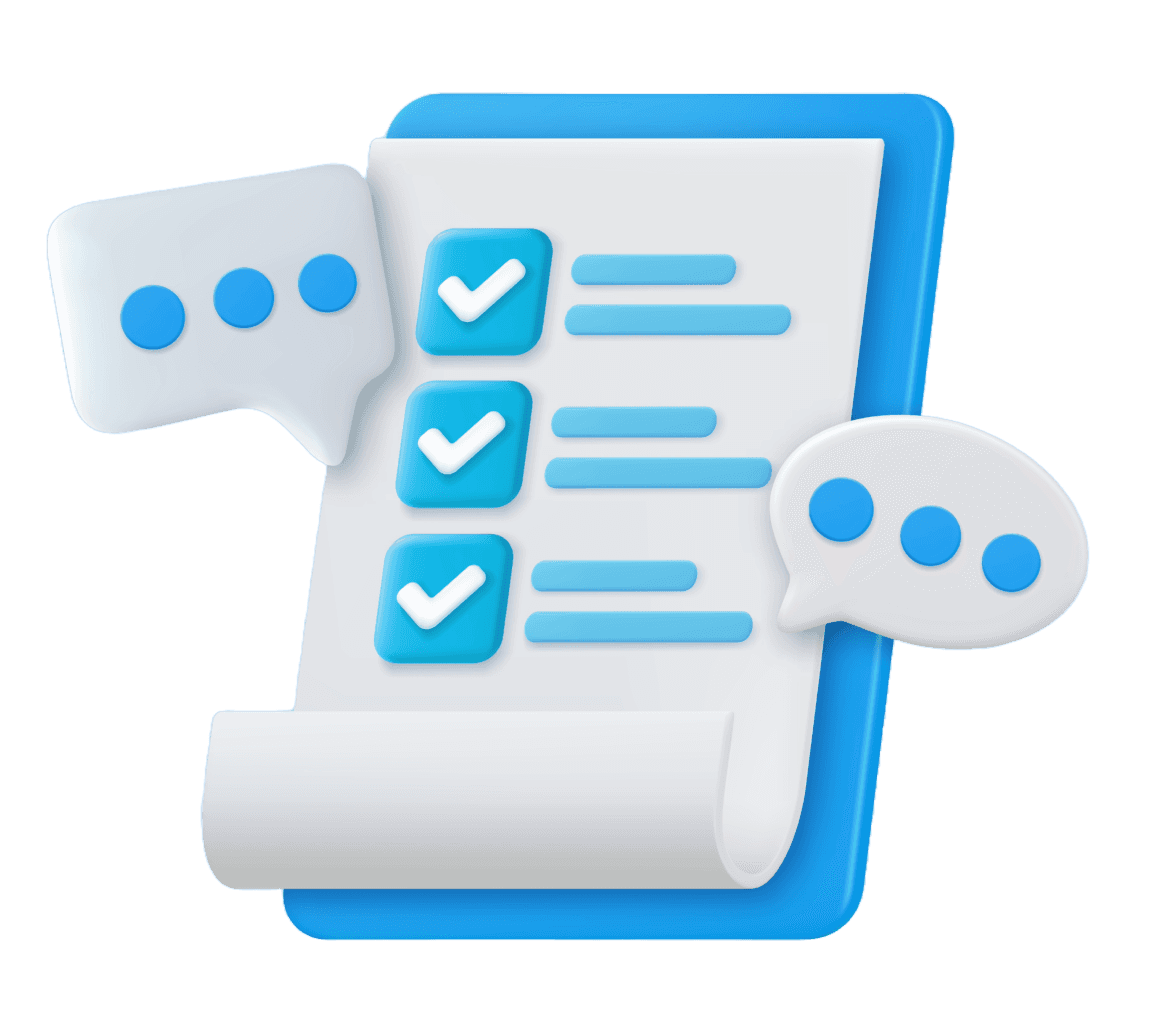
Exploratory Survey
This survey was conducted to validate the finding of secondary research and generate user response data that is utilized in the formation of user groups
STEP
02


User Interview and outcomes
User interviews were conducted to discover qualitative insights about user attitudes, beliefs, desires and experiences. Interview recordings were analyzed for deriving the user problems.
STEP
04

Habits

Attitude
Qualitative Influential Attributes (QIAs) Survey
This survey was conducted to validate the behaviours, habits, aptitudes and attitudes of audience identified during secondary research.
STEP
01





STEP
03
User Study & User group formation
This study was done to collate and evaluate user response data received form surveys to form user groups based on similarities and patterns in user responses.

STEP
05
Causal survey
This survey was conducted to validate the user problems derived from the user interviews. Insights from the survey responses were further studied and Interpretations were made.

Exploratory Survey
This survey was conducted to validate the finding of secondary research and generate user response data that is utilized in the formation of user groups
STEP
02


User Interview and outcomes
User interviews were conducted to discover qualitative insights about user attitudes, beliefs, desires and experiences. Interview recordings were analyzed for deriving the user problems.
STEP
04
Qualitative Influential Attributes (QIAs) Survey
Qualitative Influential Attributes (QIAs) Survey
Qualitative Influential Attributes are characteristics that can influence a specific outcome or a decision but cannot be measured or quantified. These attributes are highly significant as they impact user’s behavior, habits, aptitudes, and attitudes. These attributes are psychological factors that influence the career goals of the target audience.
Qualitative Influential Attributes are characteristics that can influence a specific outcome or a decision but cannot be measured or quantified. These attributes are highly significant as they impact user’s behavior, habits, aptitudes, and attitudes. These attributes are psychological factors that influence the career goals of the target audience.
33 Responses were received in the survey.
The major audience groups participating in the survey were students, working professionals, interns and Entrepreneurs.
Working professionals and Interns had the maximum participation with 39.4% and 24.2% responses respectively.
33 Responses were received in the survey.
The major audience groups participating in the survey were students, working professionals, interns and Entrepreneurs.
Working professionals and Interns had the maximum participation with 39.4% and 24.2% responses respectively.
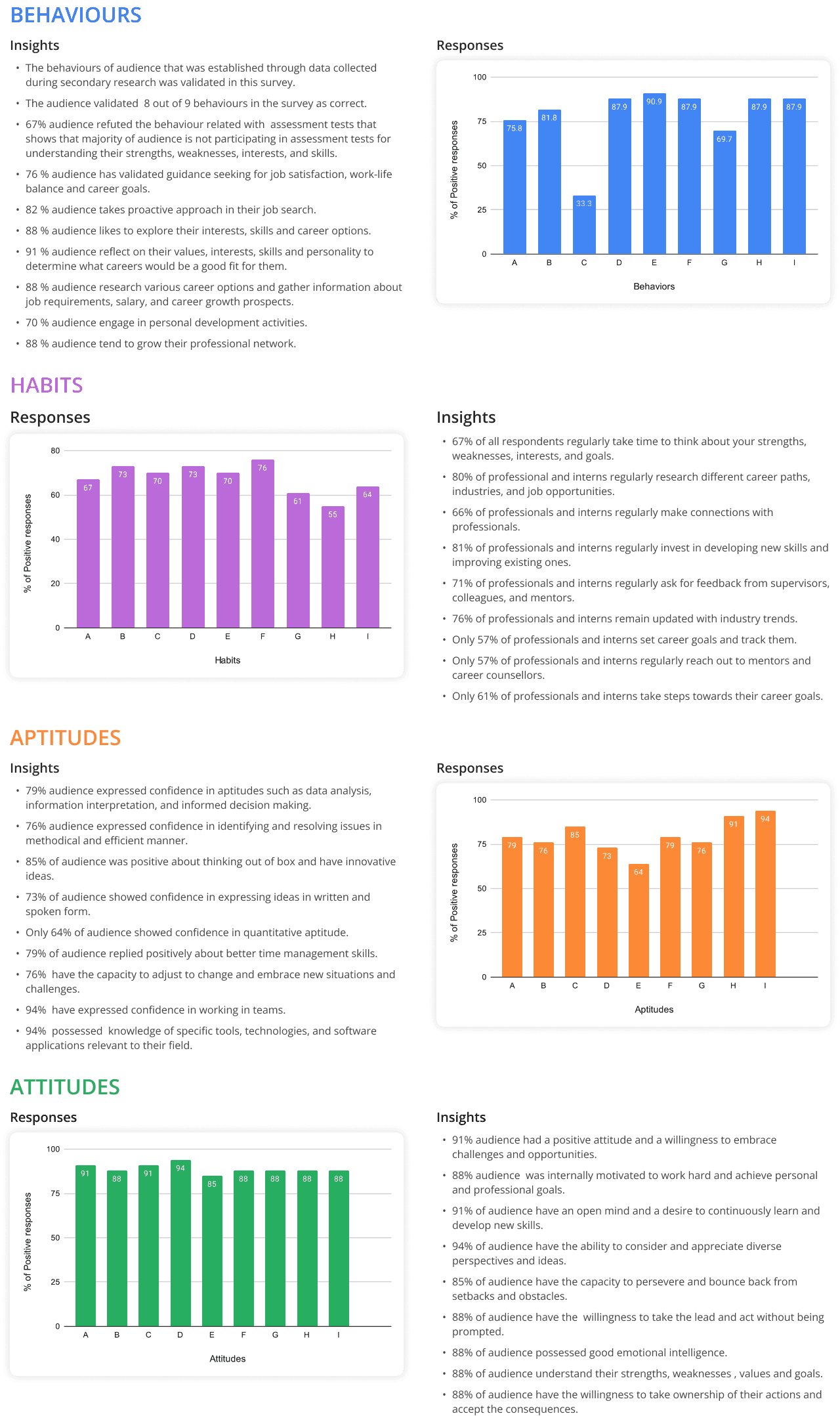

Next, I conducted an Exploratory survey to validate the findings of the secondary research stage.
This survey is instrumental in the formation of user groups.
Exploratory survey clusters were formed from secondary research data.
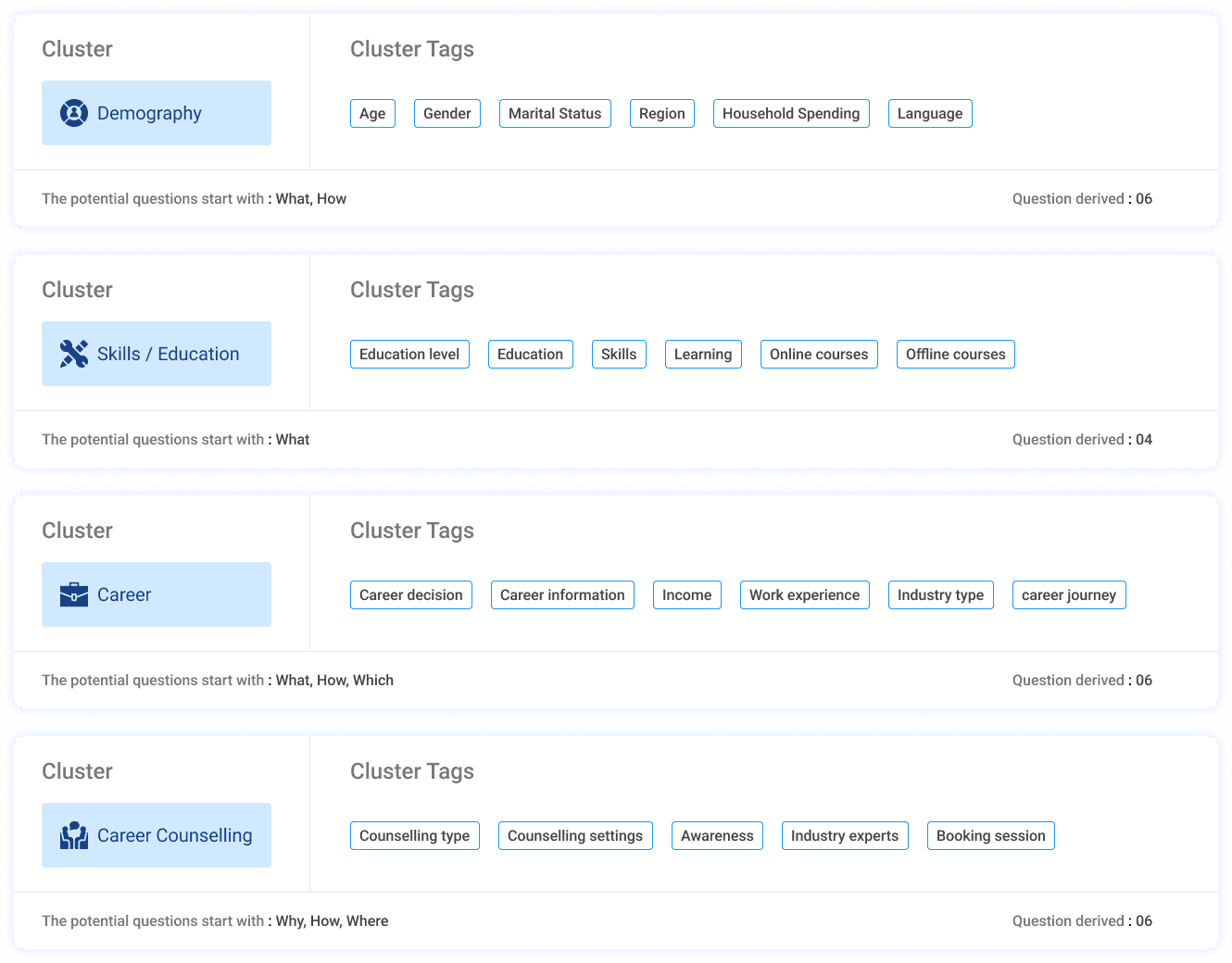

These survey clusters are then used to derive survey questions.
These survey clusters are then used to derive survey questions.
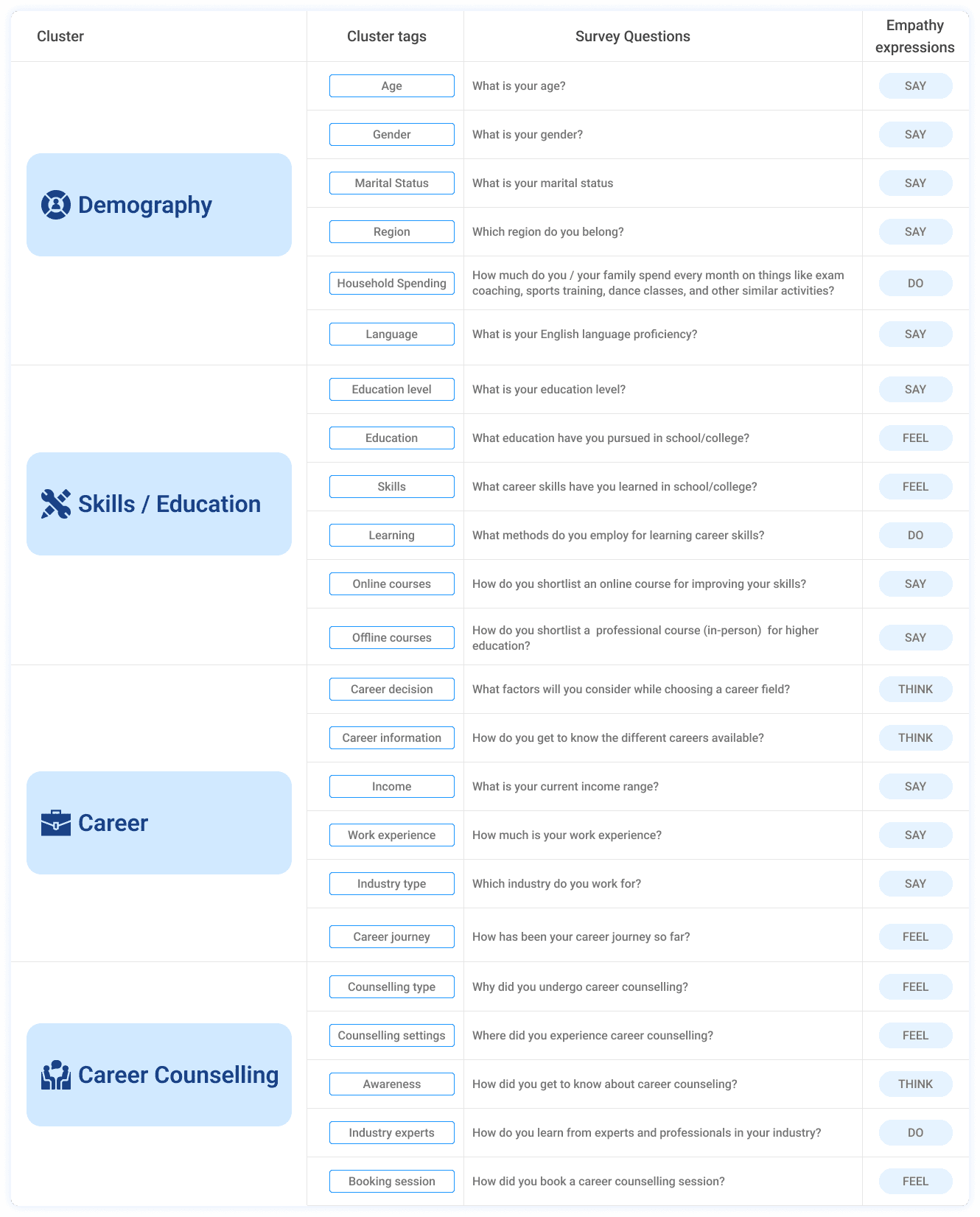

The core responses based on business cases were filtered based on 20% and above responses as a percentage of all responses. Similarities and patterns were identified in user responses and then grouped into different groups.
The core responses based on business cases were filtered based on 20% and above responses as a percentage of all responses. Similarities and patterns were identified in user responses and then grouped into different groups.
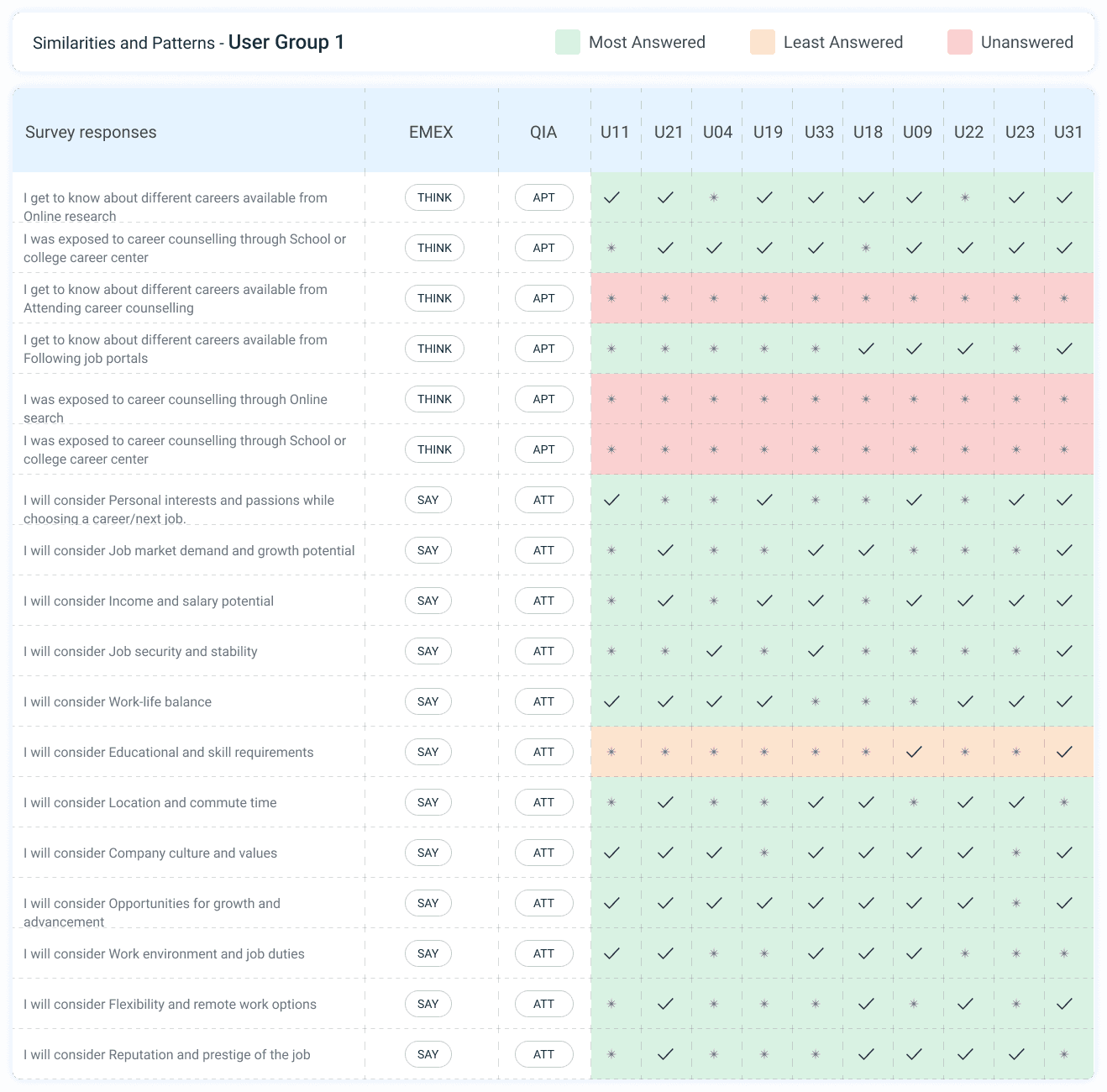

Users are sorted on the core responses based 70% or more similarities and patterns.
User groups are formed based on the identification of similarities and patterns.
Users are sorted on the core responses based 70% or more similarities and patterns.
User groups are formed based on the identification of similarities and patterns.
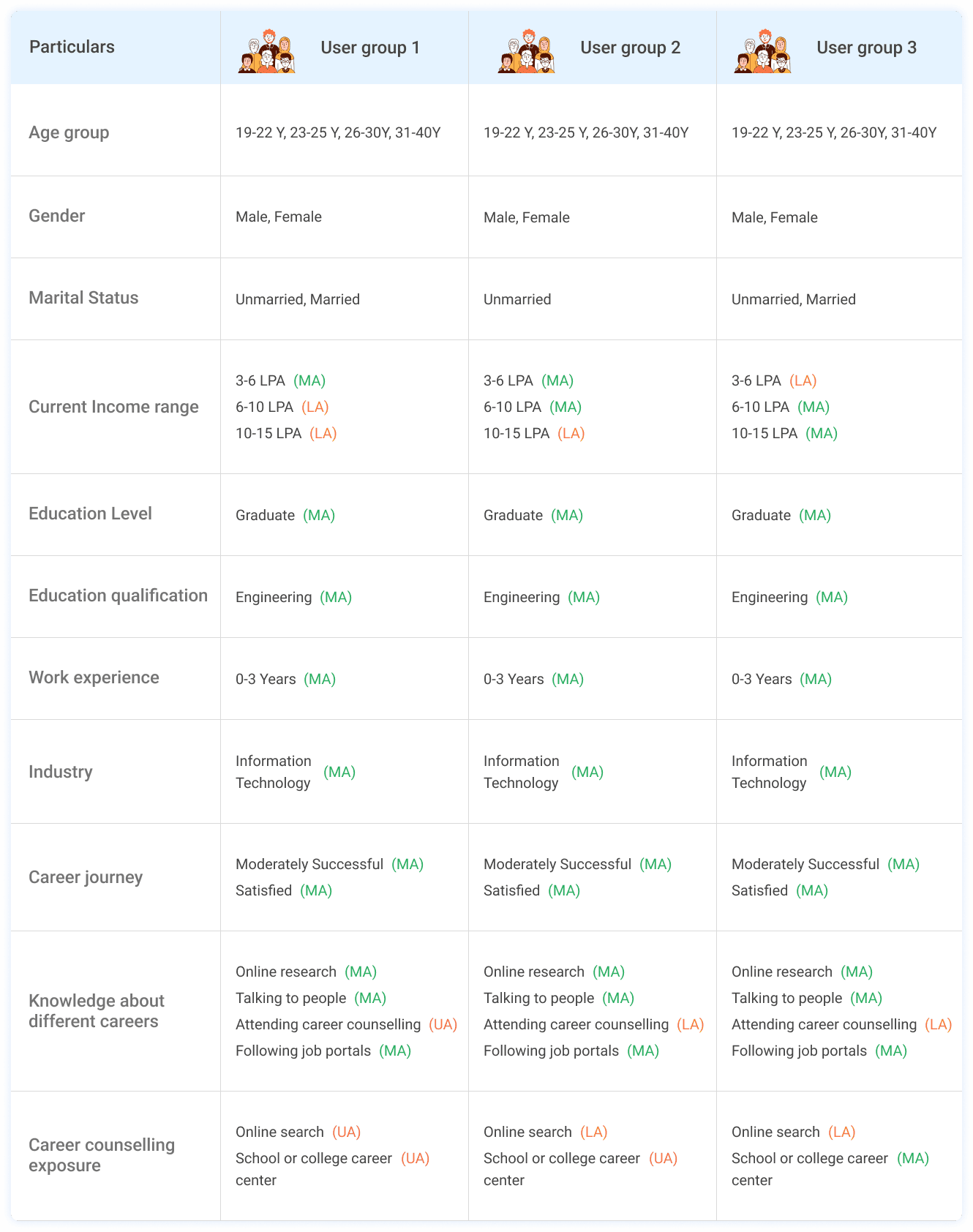

With the formation of user groups, I was now well aware of my users and their detailed profiles. I had a lot of quantitative data around users but still I did not know the exact pain point of the users. With this I started another interesting phase of my research
With the formation of user groups, I was now well aware of my users and their detailed profiles. I had a lot of quantitative data around users but still I did not know the exact pain point of the users. With this I started another interesting phase of my research
User Interviews.
I planned to take structured interviews and tried to make the whole conversation open-ended. I collated contact details of users from survey responses and contacted them through WhatsApp asking for their consent.
I planned to take structured interviews and tried to make the whole conversation open-ended. I collated contact details of users from survey responses and contacted them through WhatsApp asking for their consent.
This was a really hard part as many users found it annoying to see someone contacting them for an interview that they had agreed to many weeks ago. Some people did not even remember that they had filled any such survey form.
User interview questions were derived from macro-clusters and micro-clusters identified during the exploratory survey stage.
With all this exercise going on for around 1 week, I managed to onboard 16 users across different user groups.
This was a really hard part as many users found it annoying to see someone contacting them for an interview that they had agreed to many weeks ago. Some people did not even remember that they had filled any such survey form.
User interview questions were derived from macro-clusters and micro-clusters identified during the exploratory survey stage.
With all this exercise going on for around 1 week, I managed to onboard 16 users across different user groups.
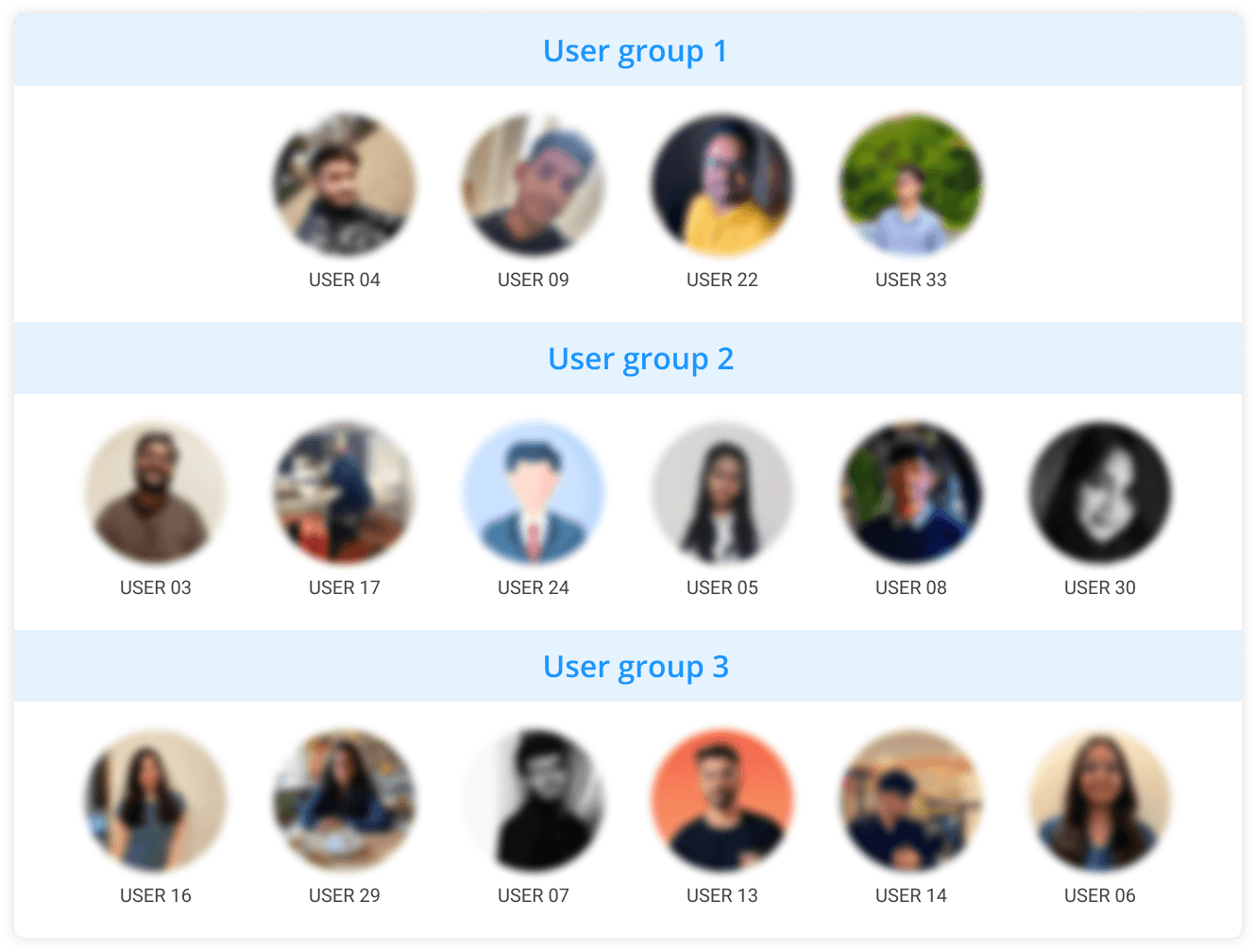

User interview questions were derived from macro-clusters and micro-clusters identified during the exploratory survey stage.
User interview questions were derived from macro-clusters and micro-clusters identified during the exploratory survey stage.
Interview recordings were analyzed to derive the user problems. Identified user problems were tagged with Qualitative Influential Attributes.
Interview recordings were analyzed to derive the user problems. Identified user problems were tagged with Qualitative Influential Attributes.
I managed to interview only 11 users out of 16 as some people did not show up and some had other urgent issues at the time.
After deep study of user interview recordings, key user problems related to the business case were identified. Some of the user problems identified after user interview are as follows.
After deep study of user interview recordings, key user problems related to the business case were identified. Some of the user problems identified after user interview are as follows.
User Problems
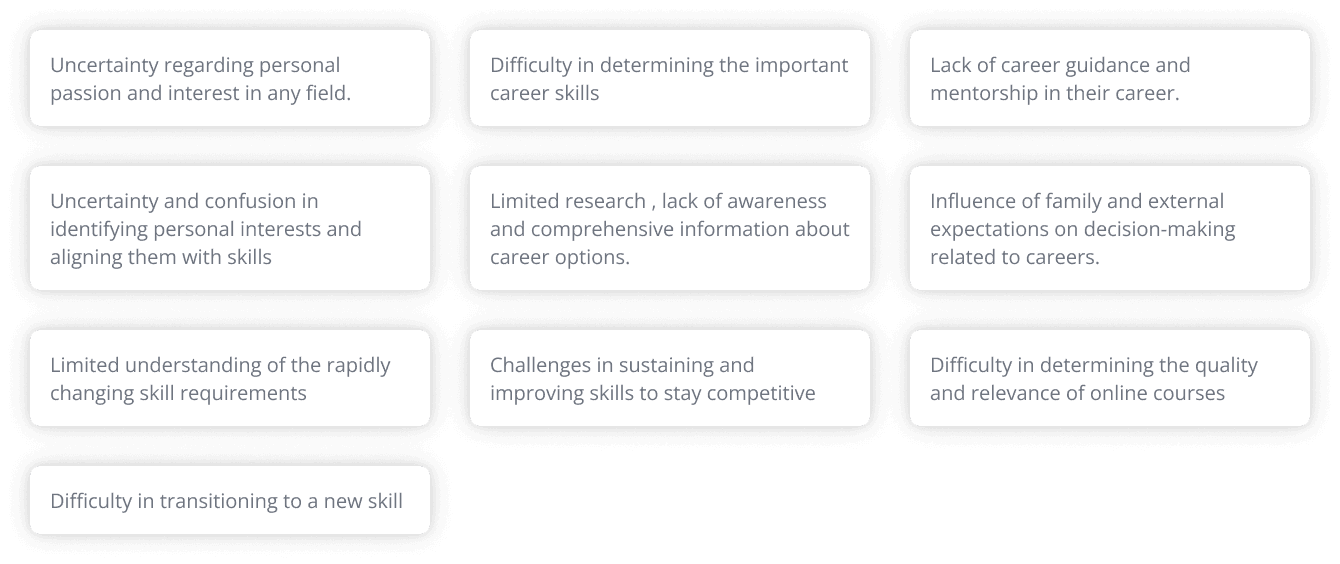


Finally root causes of user problems along with indicative business metrics for solving the problems were identified.
Finally root causes of user problems along with indicative business metrics for solving the problems were identified.
Finally, I had some real problems to work on in my project. I was looking forward to thinking of solutions and jumping to design wireframes at this moment.
The causal survey was conducted by sending the Google form link to participants through social media groups on WhatsApp and LinkedIn. I also requested people on LinkedIn and WhatsApp through DMs to participate in the survey.
A total of 79 responses were received in the survey.
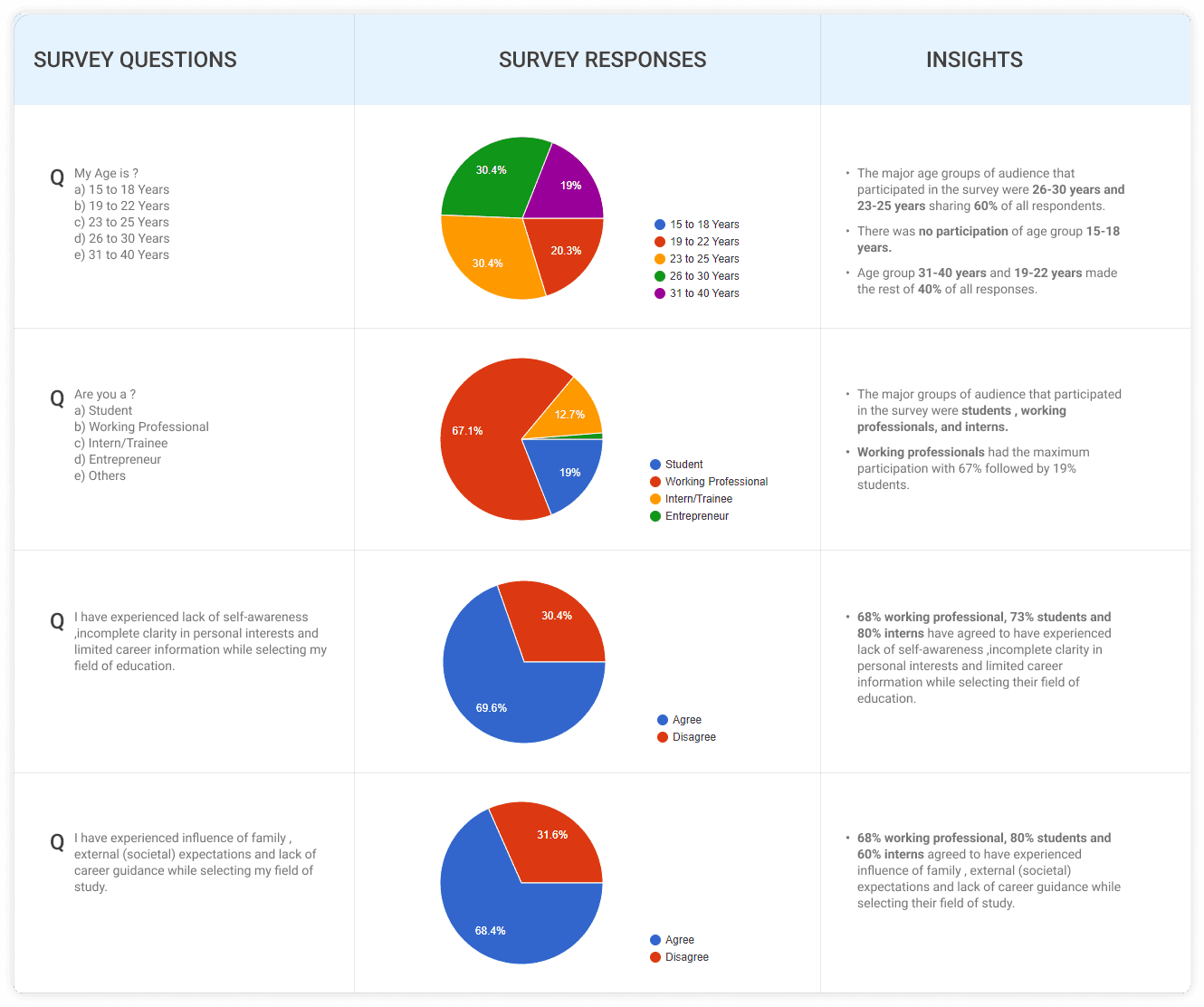

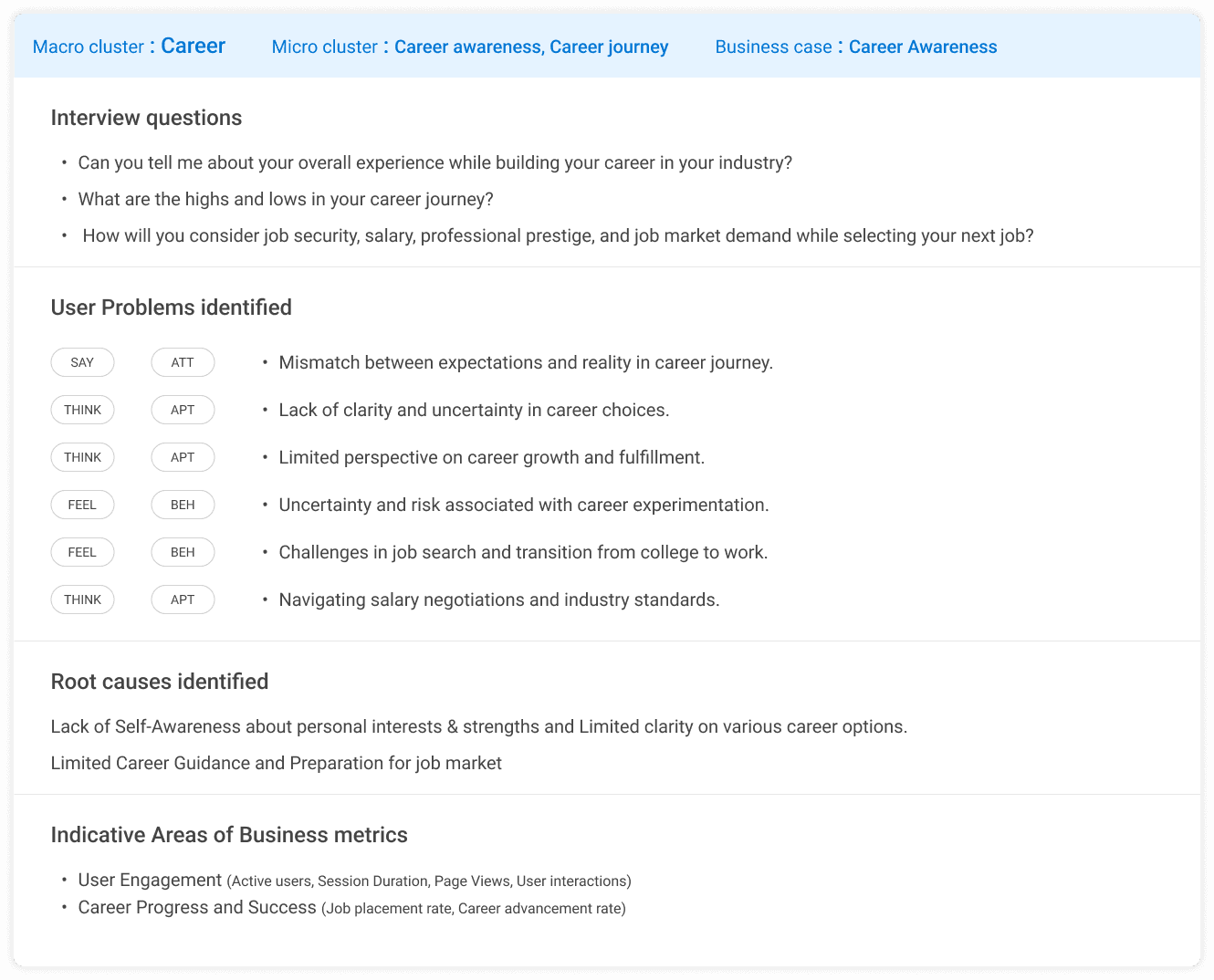

But then I conducted the Causal survey to validate the findings and insights gained in user interviews.
But then I conducted the Causal survey to validate the findings and insights gained in user interviews.
Lets create excellent products!
CONTACT
vikassethi2007@gmail.com
91-96546 65889
SOCIALS
vsdesigns.com
Lets create excellent products!
CONTACT
vikassethi2007@gmail.com
91-96546 65889
SOCIALS
vsdesigns.com
Lets create excellent products!
CONTACT
vikassethi2007@gmail.com
91-96546 65889
SOCIALS
vsdesigns.com